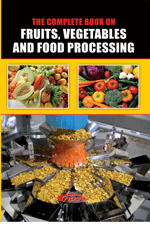Fruits and vegetables are essential parts of the human diet, providing vital nutrients and health benefits. To extend their availability and reduce waste, food processing plays a critical role. From harvesting to packaging, the food processing journey ensures quality, safety, and accessibility of these perishable items. As global demand rises, innovations in this sector become more important than ever.
See Also: Roller Flour Mill
Importance and Methods of Fruits and Vegetables Food Processing
Why Food Processing Matters
The fruits and vegetables food processing industry helps reduce spoilage and waste. It converts perishable produce into stable products with a longer shelf life, such as dried fruits, canned vegetables, and juices. These transformations make seasonal or regionally available products accessible year-round.
Core Processing Methods
Common methods include cleaning, grading, peeling, blanching, freezing, canning, and drying. For example, blanching helps lock in nutrients before freezing, and drying reduces water content to prevent spoilage. These steps maintain product quality during transportation and storage.
Value Addition in Processing
Processed products like fruit jams, pickles, purees, and sauces have higher market value than raw produce. This opens new income streams for farmers and agro-entrepreneurs. It also stimulates rural industries and creates jobs.
Minimizing Post-Harvest Loss
A significant amount of fresh produce is wasted due to poor storage and transport systems. Food processing extends shelf life, allowing the produce to reach markets without damage. This supports food security and efficient resource use.
Hygiene and Food Safety
Sanitation is crucial at every processing stage. Only the best-quality produce is selected after sorting and washing. Strict hygiene standards reduce microbial contamination and ensure safe, edible products for consumers.
Storage and Packaging Solutions
Proper packaging is vital for preserving quality. Vacuum sealing, airtight containers, and cold storage help retain freshness. Packaging also plays a role in branding and convenience, especially in retail environments.
Technological Advancements
Modern technologies have transformed fruits and vegetables food processing. Innovations like high-pressure processing (HPP), infrared drying, and smart packaging systems improve efficiency, retain nutrients, and reduce energy use. These tools are especially beneficial for large-scale processors and exporters.
Organic and Natural Processing Trends
With rising demand for clean-label products, processors are adopting natural preservation methods. Steam sterilization and UV treatment are replacing chemicals. Consumers are also choosing minimally processed foods that retain natural color, flavor, and nutrients.
Government Support and Infrastructure
Governments are promoting food processing through subsidies, training, and export incentives. Agro-processing parks, cold chain networks, and storage hubs are being developed to improve supply chain logistics and market access.
Nutrition Retention Through Smart Techniques
Certain methods, like flash freezing and vacuum drying, retain up to 90% of the nutrients. This means processed fruits and vegetables still offer substantial health benefits. Techniques that preserve vitamins and antioxidants are especially valuable in health-focused markets.
Empowering Small-Scale Producers
Small farmers and micro-entrepreneurs can benefit immensely from fruits and vegetables food processing. Affordable machines for slicing, juicing, or drying help them build their own brands. This reduces dependence on middlemen and increases profits.
Overcoming Seasonality
Processing helps make seasonal items like mango, jackfruit, and peas available throughout the year. Whether frozen, pureed, or canned, these products enhance menu diversity in homes, restaurants, and food industries.
Environmental Benefits and Waste Management
Processing reduces the need for constant transportation, lowering carbon emissions. By-products like peels and pulp are now used to make compost, biofuel, or animal feed. These practices contribute to a zero-waste production model.
International Trade and Export Growth
Countries with surplus harvests are tapping into the global demand for processed produce. Meeting export standards through quality packaging and processing helps nations boost agricultural exports and earn foreign exchange.
Adapting to Consumer Preferences
Today’s consumers prefer healthy, convenient, ready-to-eat snacks and meals. Frozen mixed vegetables, fruit smoothie packs, and canned items fulfill this demand. Food processors constantly adapt to trends with better flavors and improved shelf appeal.
Education and Skill Development
Training programs and food tech courses equip youth with the knowledge to join or start ventures in this sector. Educational institutions also drive research in improved techniques, sustainable packaging, and product innovation.
Urbanization and Changing Lifestyles
Busy lifestyles require convenient cooking and eating options. Processed foods meet this need without sacrificing nutrition. As a result, they have become staples in urban households, driving rapid market growth.
Circular Economy and Sustainability
Waste from processing units can be reused in innovative ways. Extracts from fruit skins are used in cosmetics, while vegetable waste becomes animal feed. These approaches minimize impact on the environment and encourage circular production.
Challenges and the Way Forward
Despite the benefits, the industry faces challenges like energy costs, lack of skilled labor, and limited cold storage. However, partnerships, policy reforms, and technology adoption are helping bridge these gaps and ensure steady progress.
See Also: Bicycle Manufacturing Industry
Conclusion
In summary, fruits and vegetables food processing plays a vital role in modern agriculture and food security. It reduces waste, enhances shelf life, creates jobs, and meets changing consumer needs. With innovation, education, and support, this sector can transform local economies while feeding the world in a sustainable, efficient way. Embracing food processing is not just about preserving food—it’s about securing a better future.
Contact Us


